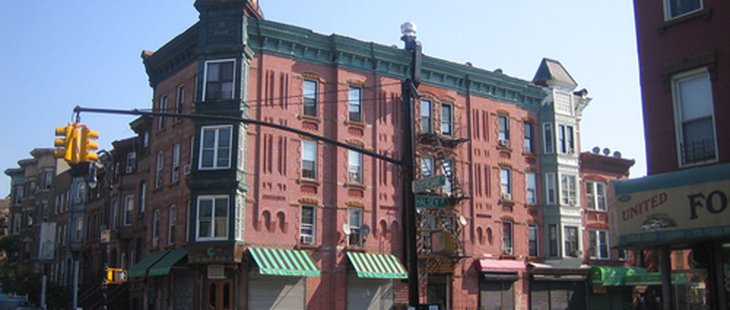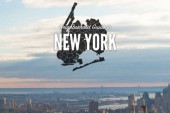
“Who told you to buy a brownstone on my block, in my neighborhood, on my side of the street? Yo, whatchu wanna live in a black neighbourhood for anyway? Motherfuck gentrification.”
Those words, spat out by Buggin’ Out in a confrontation with a white man on a bike in Spike Lee’s 1987 film Do the Right Thing, encapsulate much of the conversation about gentrification. Whether its effects are good or bad depends on whom you ask. But that it’s been an inevitable, and controversial, force in urban areas the world over cannot be disputed.
Gentrification–or “revitalization,” or “urban renewal,” or whichever euphemism reigns today–tends to follow a simple enough formula, often dubbed the SoHo effect, after the Manhattan neighbourhood that was transformed from grimy to Gucci in a matter of years. Here’s how it works: adventurous “urban pioneers” seeking lower rents move into disadvantaged areas, followed by a few businesses to service them. Next, even more people and businesses come flooding in, raising rent and property taxes until the neighbourhood is barely recognizable. And just like that, a corner that once housed a bodega-cum-dominoes parlor frequented by the local elders is now home to a fair-trade coffee shop that also sells vegan cupcakes for poodles.
As more and more inner city neighbourhoods are transformed in this way, gentrification has become a punchline of sorts–no less real than it was in the ‘80s, but much less novel. Still, we tend to characterize it along the same lines: since class and race have, in North America anyway, long been inextricably linked, skin colour has historically been a marker of a person’s role in the battleground over a neighbourhood. Ergo, as in Do the Right Thing, white people are perceived as the agents of gentrification, and black people and Latinos as its victims.
But as the black middle class grows–nearly 40 percent of African-Americans were considered to be a part of the middle class in the U.S. in 2008, up from 27 percent in 1990–conceptualizing gentrification as a struggle between white people with money and people of color without it paints an incomplete picture. And as populations shift, economically, socially and geographically, greater numbers of black people are joining the ranks of the gentry, resulting in a complex struggle over identity that plays out in day-to-day life.
“Because I’m a person of colour, they see me as someone from the community. But they just think I dress weird and have a flashy bike,” says Samson Clarke, who is black, and one of the original residents of our still-gentrifying East Williamsburg neighbourhood, which was 75.4 percent non-white according to the 2009 American Community Survey. “They consider me one of them,” he says.
They don’t know that he is, in fact, from a suburb of Chicago, grew up middle-class in a house his parents owned, and currently pays a whopping $1,000 per month to share a two-bedroom apartment a few blocks away from the projects. By all metrics other than race, Clarke is a gentrifier.
The divide between these groups is undeniable and unsurprising. Certain businesses, like a new health food store carrying organic vegetables and gluten-free baked goods, are more or less off-limits to the neighbourhood’s original inhabitants simply because their prices are significantly higher than those of the local supermarket, which carries ethnic foods and encourages bulk buying. Conversely, other businesses, like a decidedly hip-hop barbershop called Street Codez, can be threatening to newcomers. “I’m terrified to go in there; they’ll think I’m a square,” a friend once told me, fearing that his whiteness was a clear indicator he didn’t belong.
That unsettling sense of being unwelcome, which is certainly less palpable today than it was in the ‘80s, can be more forgiving of black gentrifiers. For us, there is a greater freedom to exist where we live because we are more or less invisible. We barely stand out among the neighbourhood’s original inhabitants, who, aside from a few of our aesthetic choices, have no real way of determining whether we live in a shiny starchitect-designed condo or are residents of one of the community housing projects down the street. Skin colour tends to speak louder, though not necessarily more accurately, about one’s situation than do Jeffrey Campbell platforms or A.P.C. denim.
Anthony Bryant, a designer from Binghamton, N.Y. who now lives in the predominantly black, but quickly gentrifying, neighbourhood of Bed-Stuy, agrees. “I’m not from Brooklyn, but I’m black so it makes it easier to [be a newcomer]. Many white people move into a neighbourhood thinking they are bringing a culture to it,” he says, citing the art-school student magnet Bushwick as an example. “They may think nothing was there before gentrification. But it’s really that nothing was there for them.”
Because we belong to both groups–the gentry, by class and the longtime residents, by race–precisely where black gentrifiers fit into a changing community is fluid; we are both insiders and outsiders. “When I get on my fixed-gear bike and I’m wearing my skinny jeans from Uniqlo, [white gentrifiers] think, ‘that guy is one of us; he just happens to be black’,” Clarke says. “But when I go do my laundry and I’m wearing track pants and a baggy t-shirt, I get looked at in a different way. Absolutely in a different way.”
My barber, who is Puerto Rican and was born and raised in East Williamsburg, once told me that he is not opposed to gentrification; it’s making his neighbourhood safer, he says, and it allows him to introduce his daughter to once-foreign things like bubble tea. His concern, rather, is that the neighbourhood is becoming “more white” and, therefore, less Puerto Rican. In that sense, gentrification raises fears both about the physical (being pushed out of one’s neighbourhood) and the intangible (losing control of the neighbourhood’s identity). And race is often at the core of that identity, hence Buggin’ Out’s insistence that his is a black neighbourhood.
That’s what Mary Pattillo, Professor of Sociology and African-American Studies at Northwestern University and author of Black on the Block: the Politics of Race and Class in the City, found while researching the North Kenwood-Oakland neighbourhood of Chicago, where black-on-black gentrification took place on a relatively large scale beginning in the ‘90s. As one long-time resident of the neighbourhood told her, “[Whites] can move if they want to, but I don’t want this to be where it’s more white people and then it’s like just a few black people.” In that sense, black gentrifiers, as opposed to white ones, are less likely to be perceived as real a threat to a neighbourhood’s identity, even though they very well may be. But while we may find it easier to integrate ourselves into communities that can be wary of newcomers, it’s not all positive. “Because of the way that I dress, they think that I think I’m better than them. They’re like, ‘Who do you think you are? You think you’re better than me cause you like white people cheese?’,” says Clarke, raising the perennially unanswerable question of what it means to be black or white–or whether it means anything at all.
There is a pervading, long-standing assumption that being black means you will inherently prefer, for instance, a coffee from Dunkin’ Donuts over a single-origin espresso from a trendy coffee shop, and that choosing the latter somehow dilutes your blackness. But that is, in many ways, because being black in America has long been synonymous with being poor, and the inverse–being black and having means–has often meant being a “sell-out.” Of course, these assumptions are being publicly challenged, if not shattered, by the likes of Barack Obama.
For black gentrifiers, though, being responsible, albeit indirectly, for pushing other people of colour out of a place they’ve called home for generations can be especially difficult. “Sometimes it feels like betrayal,” says Bryant. “But [gentrification] is gonna happen regardless, so why shouldn’t I live where I want to live?”
Clarke describes a similar feeling. “I hate walking down the street and passing by a bunch of [black] dudes my age who are just standing on the corner with nothing to do,” he says. “But I have a job, I have money, so I try to make everyone feel comfortable with the inevitable. I want to act like nothing’s changing, even though we all know it is.”














